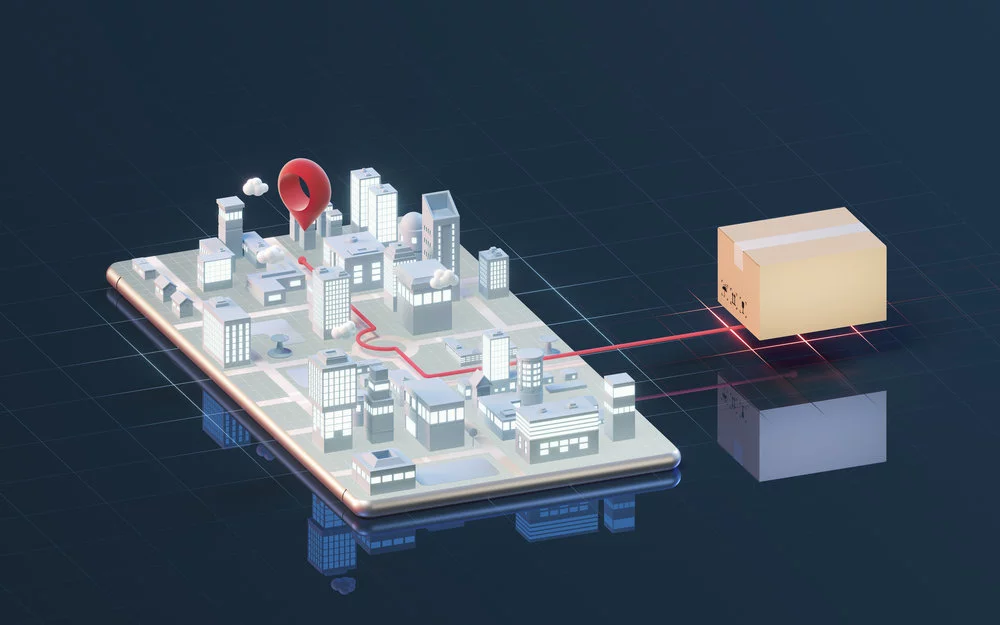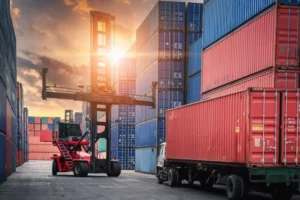Forecasts for the technology-intensive applications sector paint a picture in which the Internet of Things (IoT) redefines supply chain risk management through a comprehensive system transformation. This revolution will radically change the industry's current capabilities and transform the ecosystem into a hyper-connected and intelligent infrastructure. As technology continues to evolve, the number of connected devices will increase exponentially. From sensors in parcels to AI-driven delivery drones and autonomous vehicles, these devices will form a complex network of data streams. A network that functions like a well-orchestrated symphony, playing a logistical melody conducted by real-time insights and predictive analytics. The integration of IoT technologies has ushered in a new era of innovation in logistics and supply chain management.
This article is dedicated to the transformative role of IoT in improving supply chain risk management. By leveraging the power of IoT , stakeholders can now deploy more powerful, adaptable solutions and refined tools. These tools aim to minimize risk, increase operational efficiency and create a more resilient and agile supply chain network.

Understanding IoT and the need for risk management
In the context of logistics and supply chains, the Internet of Things (IoT) represents a groundbreaking technological paradigm shift. It is expected to serve as a key enabling technology and could be comparable in its impact on the industry to other inflection points such as the Industrial Revolution. An industry characterized by seamless connectivity and data-driven decision making will become the standard of the future. The importance of risk management in the supply chain sectors is huge. In the following sections, we will explore this topic further and highlight the link between IoT and risk management to show how this synergy leads to innovative solutions to mitigate risk and strengthen the integrity of supply chains.
Innovative IoT applications
- Intelligent containers and solutions for risk management in the supply chain: monitoring location, temperature, humidity and environmental factors ensures optimal conditions for sensitive goods.
- Networked trucks: Monitoring fuel consumption, engine performance and driver behavior increases both efficiency and safety within the logistics chain.
- Intelligent warehouses: Automation and sensor-based tracking optimize inventory management, automate tasks and maximize space utilization.
- Predictive maintenance systems: By monitoring the condition of devices and predicting failures, these systems proactively prevent downtime and costly repairs.
The role of IoT in improving risk management in the supply chain
Risk management in the supply chain includes strategies to identify, assess and mitigate risks. It aims to detect threats and disruptions that could affect the flow of goods and services - both external, such as weather and unforeseen events, and internal, due to inefficiencies or undetected liability risks within the organization.
Effective supply chain risk management focuses on key components and objectives such as resilience, agility and contingency planning. Common risks in this sector cover a wide range of areas, including delivery delays, demand fluctuations, natural disasters and cybersecurity threats.
With the help of IoT solutions, industries that work with or manage supply chains are opening up new opportunities. These include predictive algorithms, big data and AI-supported software, which have the potential to significantly change the sector.
Let's look at some of the ways IoT can support your supply chain risk management strategies.

Improved visibility and efficiency through IoT
Real-time tracking
Sensors and RFID tags play a crucial role in this context. They provide immediate location and status data of goods along the supply chain. Through the clever use of these technologies, the industry is pursuing a proactive approach that makes it possible to identify and address potential disruptions or delays at an early stage.
Predictive analytics and IoT risk assessment
By combining historical and real-time data analysis, patterns are recognized and potential risks accurately predicted. IoT The use of AI-powered devices, combined with AI-powered software, opens up almost unlimited possibilities. This forward-looking approach to risk management enables the implementation of strategies to mitigate risks before they escalate.
Efficiency optimization
IoT-solutions optimize logistical processes and lead to even more efficient operating procedures.
Route optimization
The use of real-time traffic and weather data enables dynamic route planning and immediate corrective action. This ultimately reduces transportation costs and delivery times and enables a more sustainable and environmentally friendly approach to your fleet's carbon footprint.
Route optimization
Continuous monitoring of device health through sensors makes preventative maintenance easier. You no longer have to wait for a failure - instead, you can plan when to address a complication before it becomes a major problem. This capability not only minimizes downtime and breakdowns, but also reduces repair costs.
Predictive maintenance and IoT risk management
Continuous monitoring of device health through sensors makes preventative maintenance easier. You no longer have to wait for a failure - instead, you can plan when to address an issue before it becomes a major problem. This capability not only minimizes downtime and breakdowns, but also reduces repair costs.
Strengthening security and reducing costs
A major advantage of integrating IoT solutions into risk management is that these solutions act as a guardian for your goods. IoT-Implementations complement existing security measures and help to reduce costs within the supply chain network.
Real-time monitoring
Sensors and cameras contribute to continuous monitoring, significantly reducing the risk of unauthorized access, theft or damage to goods. This not only helps to minimize losses, but also helps to keep stock at an optimal level.
Data encryption and IoT risk management tools
The introduction of IoT data encryption protects essential information and significantly reduces cyber threats. According to the FBI, the average cost of a cybersecurity incident to a company is over 4 million dollars. This sum includes both remediation costs and financial loss due to operational downtime, not including damage to reputation and brand. By using IoT in conjunction with additional security measures, you can effectively protect your company against such risks.
Customer-oriented solutions and transparency
The impact of IoT extends far beyond the operational area and improves the customer experience and transparency. It makes a significant contribution to presenting your brand to the public and shows how you are responding to your customers' needs.
More accurate delivery forecasts
Real-time tracking provides customers with extremely accurate delivery forecasts, which increases satisfaction and strengthens confidence in the supply chain.
Increased responsiveness
Early identification of potential faults enables faster solutions and minimizes negative effects on customer expectations.
Sustainability
In the current climate, consumers are increasingly demanding that the companies they are loyal to act sustainably. One of the primary demands is therefore the implementation of sustainable practices. The future of IoT risk management in logistics goes beyond mere efficiency gains and is seen as a cornerstone for promoting sustainable operations. The use of IoT in logistics paves the way for environmentally friendly operations by reducing fuel consumption through route optimization, minimizing CO2 emissions and reducing waste through precise inventory management.
Future trends and the evolution of IoT in risk management
The development of IoT is about to revolutionize the paradigms of supply chain risk management and will usher in a new era of innovation and resilience.
There are several emerging trends in IoT for supply chain risk management as we forecast the evolution within this area:
- Progress in predictive analytics: From the advancement of IoT risk assessment, predictive analytics in particular stands out. Advanced algorithms and AI technology will use real-time data to predict potential disruptions with greater accuracy.
- AI-driven risk assessment: The integration of artificial intelligence - AI - enables more nuanced solutions in risk management. AI algorithms sift through huge data sets, identify complex patterns and anticipate risks - thus refining decision-making processes.
- Blockchain integration for improved traceability: Blockchain technology ensures immutable records and transparent transactions. Integrated into supply chain risk management solutions, it strengthens traceability, minimizes the impact of counterfeit products and increases overall security.
- Development of cyber security measures: Given the increasing interconnectedness in logistics networks, IoT risk management tools will focus on strengthening cyber security measures. Continuous improvements in encryption and intrusion detection systems are critical to protect sensitive data and defend against cyber threats.
- Integration of IoT with big data: The combination of IoT and big data provides comprehensive insights. The use of extensive data sets from networked devices promotes a deeper understanding of risks and enables proactive risk mitigation strategies.
- Focus on sustainability and environmental risks: It is expected that IoT applications will increasingly take sustainability aspects into account. Monitoring environmental factors, carbon footprints and ethical sourcing will become an integral part of supply chain risk management and align with global sustainability goals.
The evolution of IoT in supply chain risk management underlines the importance of technological progress as the basis for robust risk mitigation strategies. By embracing these trends, companies are able to avoid or better manage future challenges and lay the foundation for a resilient supply chain.



